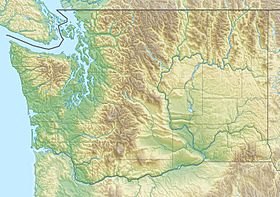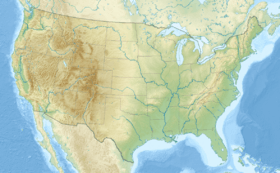Lost Peak facts for kids
Quick facts for kids Lost Peak |
|
|---|---|

Lost Peak, east aspect
|
|
| Highest point | |
| Elevation | 8,464 ft (2,580 m) |
| Prominence | 1,624 ft (495 m) |
| Isolation | 3.78 mi (6.08 km) |
| Parent peak | Mount Lago (8,745 ft) |
| Listing | Highest Mountain Peaks in Washington |
| Geography | |
| Location | Pasayten Wilderness Okanogan County, Washington, U.S. |
| Parent range | Okanogan Range North Cascades Cascade Range |
| Topo map | USGS Lost Peak |
| Climbing | |
| First ascent | 1925 by Lage Wernstedt |
| Easiest route | class 3 scrambling Southwest slope |
Lost Peak is a tall mountain in Washington state. It stands 8,464-foot (2,580-metre) high. You can find it in western Okanogan County. This mountain is part of the Okanogan Range, which is a smaller part of the larger North Cascades mountains.
Lost Peak is a remote mountain. It is about 16 mi (26 km) north of a town called Mazama. It is also about 7 mi (11 km) northwest of Big Craggy Peak. The mountain is located inside the Pasayten Wilderness. This land is managed by the Okanogan National Forest. Lost Peak is one of Washington's highest mountains. Water flowing from Lost Peak eventually reaches the Methow River.
Weather at Lost Peak
Most of the weather that affects Lost Peak comes from the Pacific Ocean. These weather systems move northeast towards the Cascade Mountains. When they reach the North Cascades, the tall mountains force the air to rise. As the air goes higher, it cools down. This causes the moisture in the air to turn into rain or snow. This process is called Orographic lift.
Because of this, the North Cascades get a lot of rain and snow. This is especially true during the winter months. In winter, the weather is often cloudy. But in the summer, high-pressure systems over the Pacific Ocean become stronger. This often means that summer days at Lost Peak have very few clouds or none at all.
How Lost Peak Was Formed
The North Cascades mountains have very rugged shapes. You can see sharp peaks, tall spires, long ridges, and deep valleys carved by glaciers. These different shapes and the big changes in height were created by geological events. These events happened millions of years ago.
The Cascade Range began to form a very long time ago. This was during the late Eocene Epoch, which was millions of years ago. At that time, the North American Plate (a huge piece of Earth's crust) was slowly moving over the Pacific Plate. This movement caused many volcanic eruptions.
Also, small pieces of Earth's crust, called terranes, came together. These pieces were from both the ocean floor and the continents. They helped create the North Cascades about 50 million years ago.
Later, during the Pleistocene period, which started over two million years ago, huge sheets of ice called glaciers moved across the land. These glaciers moved forward and then melted back many times. As they moved, they scraped away rock and left behind rock debris. The "U"-shaped valleys you see today were carved out by these glaciers.
The tall peaks and deep valleys of the North Cascades were mainly created by two processes. One is uplift, where the land is pushed upwards. The other is faulting, where the Earth's crust cracks and moves. These processes, combined with the action of glaciers, shaped the amazing landscape we see today.



